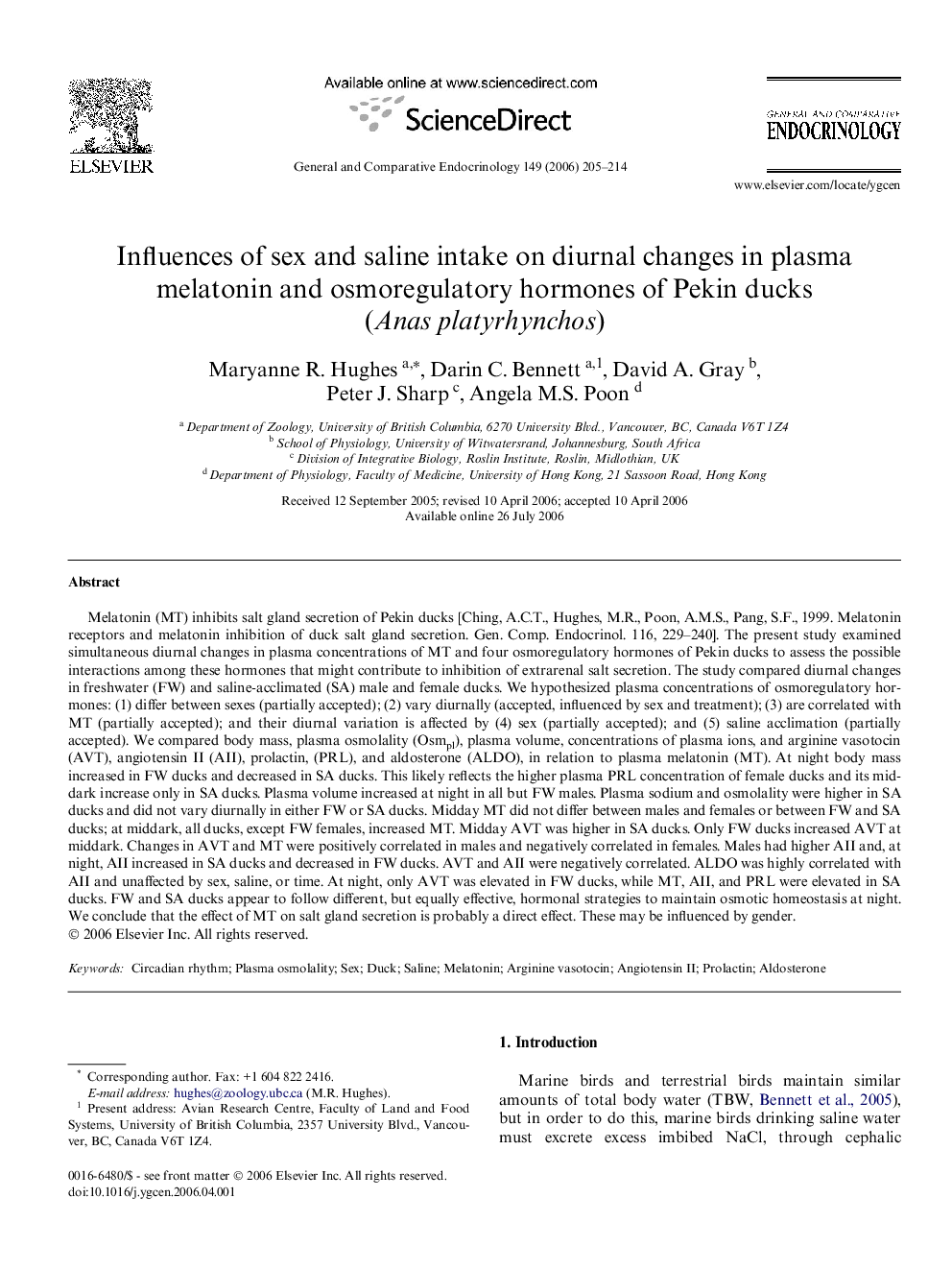| Article ID | Journal | Published Year | Pages | File Type |
|---|---|---|---|---|
| 2802169 | General and Comparative Endocrinology | 2006 | 10 Pages |
Melatonin (MT) inhibits salt gland secretion of Pekin ducks [Ching, A.C.T., Hughes, M.R., Poon, A.M.S., Pang, S.F., 1999. Melatonin receptors and melatonin inhibition of duck salt gland secretion. Gen. Comp. Endocrinol. 116, 229–240]. The present study examined simultaneous diurnal changes in plasma concentrations of MT and four osmoregulatory hormones of Pekin ducks to assess the possible interactions among these hormones that might contribute to inhibition of extrarenal salt secretion. The study compared diurnal changes in freshwater (FW) and saline-acclimated (SA) male and female ducks. We hypothesized plasma concentrations of osmoregulatory hormones: (1) differ between sexes (partially accepted); (2) vary diurnally (accepted, influenced by sex and treatment); (3) are correlated with MT (partially accepted); and their diurnal variation is affected by (4) sex (partially accepted); and (5) saline acclimation (partially accepted). We compared body mass, plasma osmolality (Osmpl), plasma volume, concentrations of plasma ions, and arginine vasotocin (AVT), angiotensin II (AII), prolactin, (PRL), and aldosterone (ALDO), in relation to plasma melatonin (MT). At night body mass increased in FW ducks and decreased in SA ducks. This likely reflects the higher plasma PRL concentration of female ducks and its middark increase only in SA ducks. Plasma volume increased at night in all but FW males. Plasma sodium and osmolality were higher in SA ducks and did not vary diurnally in either FW or SA ducks. Midday MT did not differ between males and females or between FW and SA ducks; at middark, all ducks, except FW females, increased MT. Midday AVT was higher in SA ducks. Only FW ducks increased AVT at middark. Changes in AVT and MT were positively correlated in males and negatively correlated in females. Males had higher AII and, at night, AII increased in SA ducks and decreased in FW ducks. AVT and AII were negatively correlated. ALDO was highly correlated with AII and unaffected by sex, saline, or time. At night, only AVT was elevated in FW ducks, while MT, AII, and PRL were elevated in SA ducks. FW and SA ducks appear to follow different, but equally effective, hormonal strategies to maintain osmotic homeostasis at night. We conclude that the effect of MT on salt gland secretion is probably a direct effect. These may be influenced by gender.
